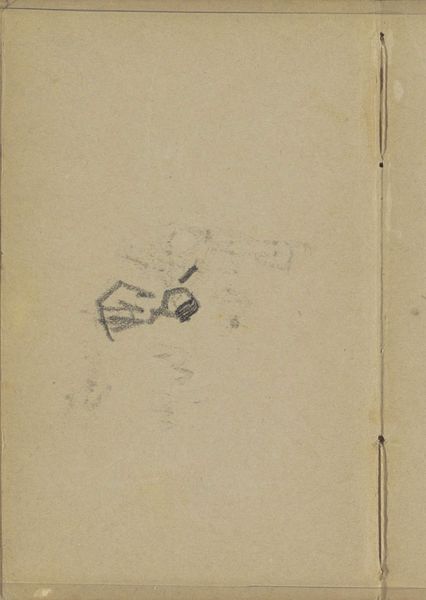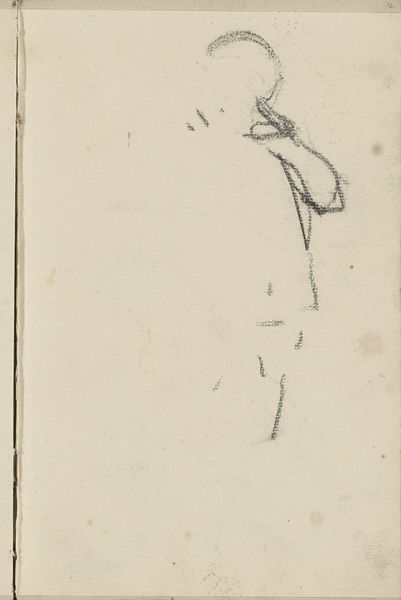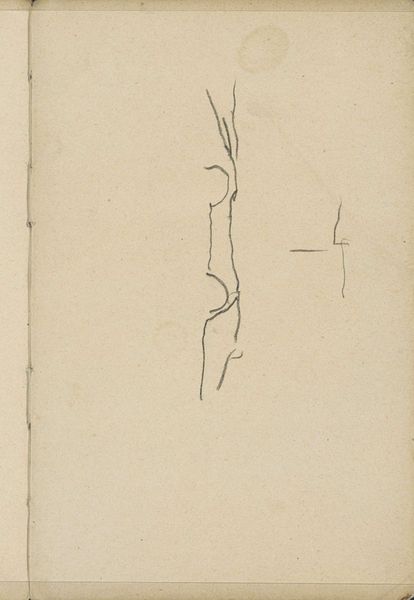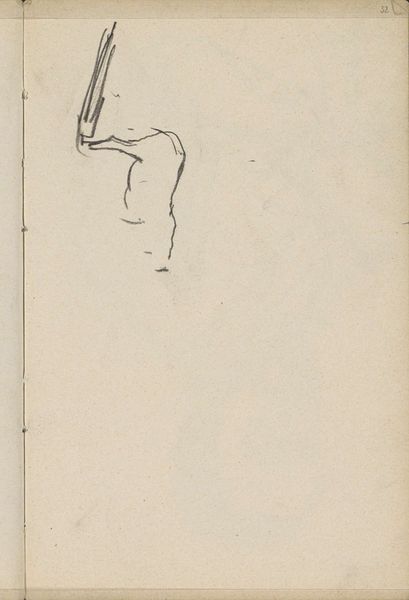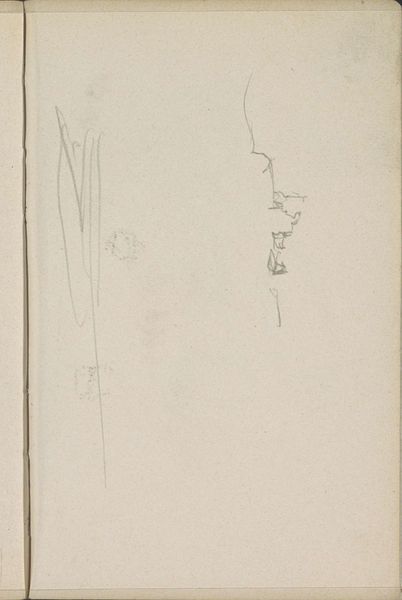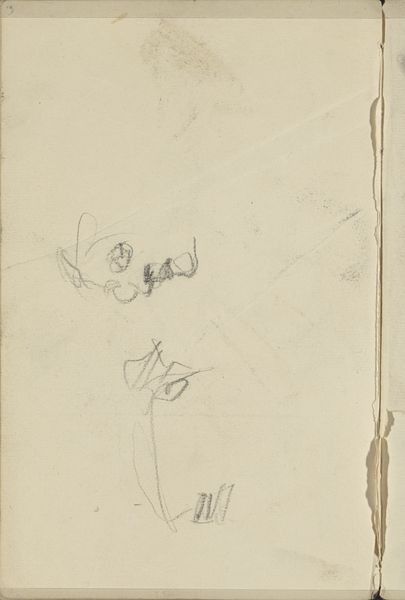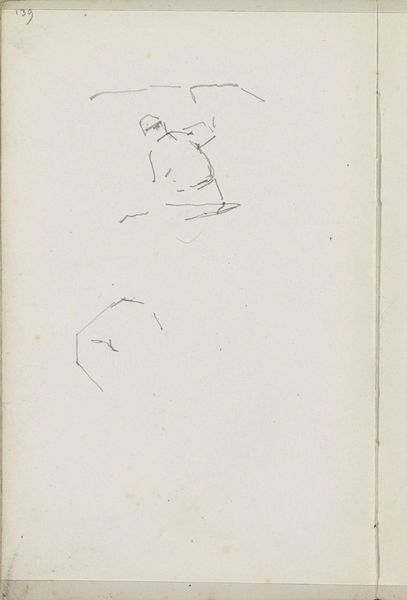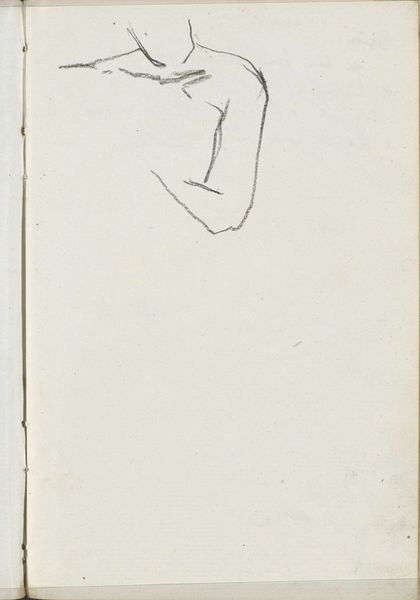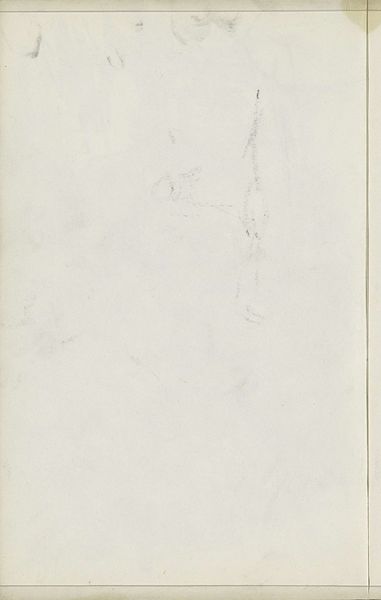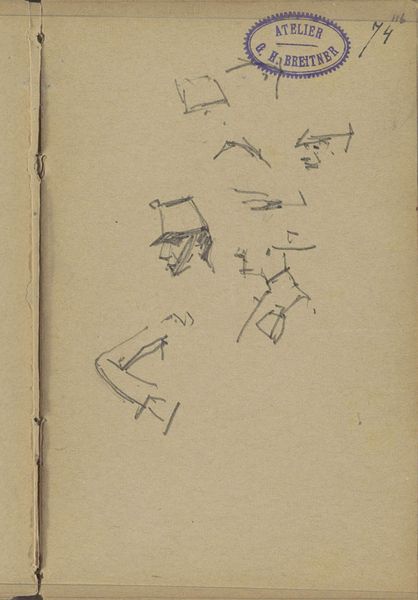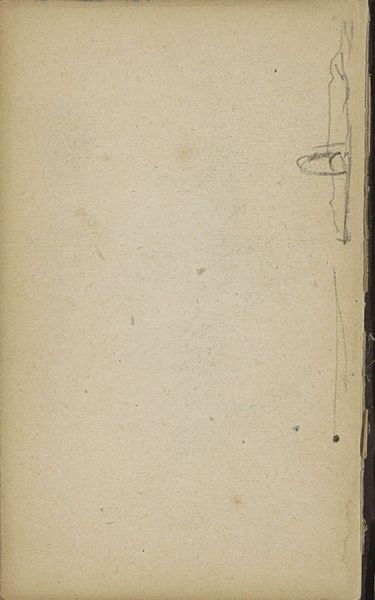
Copyright: Rijks Museum: Open Domain
Curator: Before us we have “Studie”, a drawing dating from approximately 1889 to 1904 by George Hendrik Breitner, rendered in pencil on paper. Editor: My first impression is stark, almost unfinished. It evokes a sense of something just glimpsed, quickly recorded before it vanishes. Curator: Precisely. Breitner was known for his fleeting impressions of urban life. Here, the bare lines almost suggest a portrait, perhaps the quickly rendered essence of a face, captured and recorded without detail. The drawing whispers of its own process, offering the initial vision almost direct from his mind to the page. Editor: The sketch, such as it is, has a very limited, restricted nature that, when contrasted with other images Breitner created, can reveal the implicit biases and structural inequalities inherent in representing urban populations, where fleeting moments are available as such to certain elites only. What narratives and interactions were made invisible, what other people never entered the picture at all? Curator: That’s a sharp question! Certainly, we see a glimpse of a privileged world that leaves behind other stories. But also consider how such brevity lends to symbolic power. The suggestive lines, barely a face, allow us to read so much more into it, inviting layers of projected meaning. It allows the drawing to hold a potentially greater presence, psychologically. Editor: I can understand the perspective. I consider the visible seal of Breitner’s studio on the page as a kind of assertion, maybe of its status as a fragment of authentic creation rather than an unfinished piece, though I'm not sure the symbolic association entirely redeems it. What is authentic and valued, what's merely an underdeveloped possibility? Curator: Perhaps the magic is in the eye, and its fleeting interpretation! We should not ignore what has become available to us for a variety of historical and economic contingencies. Editor: Food for thought; perhaps considering it alongside other fragments can offer more context, allow some hidden facets of the depicted society to show.
Comments
No comments
Be the first to comment and join the conversation on the ultimate creative platform.

